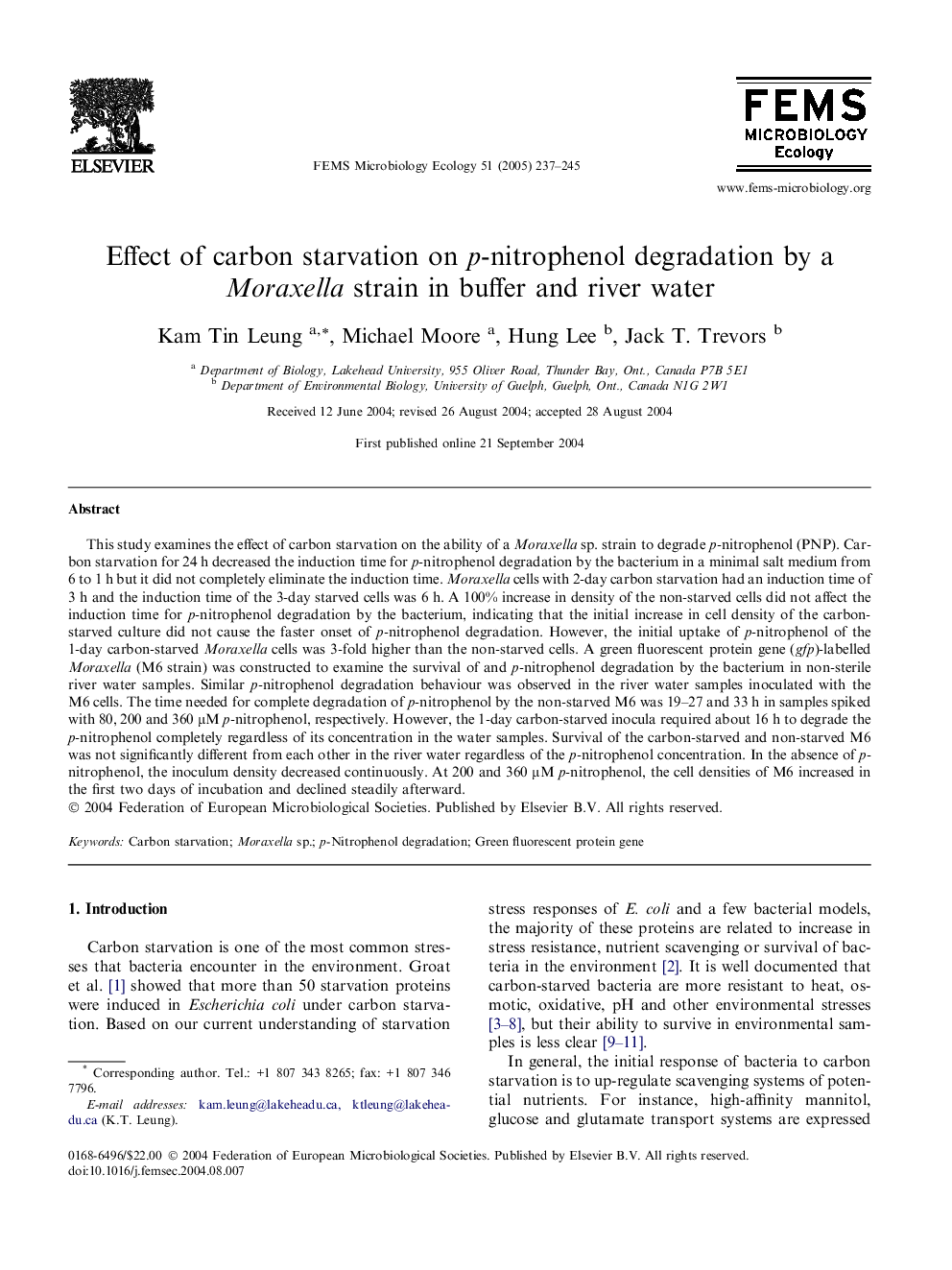| کد مقاله | کد نشریه | سال انتشار | مقاله انگلیسی | نسخه تمام متن |
|---|---|---|---|---|
| 9437771 | 1299854 | 2005 | 9 صفحه PDF | دانلود رایگان |
عنوان انگلیسی مقاله ISI
Effect of carbon starvation on p-nitrophenol degradation by a Moraxella strain in buffer and river water
دانلود مقاله + سفارش ترجمه
دانلود مقاله ISI انگلیسی
رایگان برای ایرانیان
موضوعات مرتبط
علوم زیستی و بیوفناوری
علوم محیط زیست
بوم شناسی
پیش نمایش صفحه اول مقاله

چکیده انگلیسی
This study examines the effect of carbon starvation on the ability of a Moraxella sp. strain to degrade p-nitrophenol (PNP). Carbon starvation for 24 h decreased the induction time for p-nitrophenol degradation by the bacterium in a minimal salt medium from 6 to 1 h but it did not completely eliminate the induction time. Moraxella cells with 2-day carbon starvation had an induction time of 3 h and the induction time of the 3-day starved cells was 6 h. A 100% increase in density of the non-starved cells did not affect the induction time for p-nitrophenol degradation by the bacterium, indicating that the initial increase in cell density of the carbon-starved culture did not cause the faster onset of p-nitrophenol degradation. However, the initial uptake of p-nitrophenol of the 1-day carbon-starved Moraxella cells was 3-fold higher than the non-starved cells. A green fluorescent protein gene (gfp)-labelled Moraxella (M6 strain) was constructed to examine the survival of and p-nitrophenol degradation by the bacterium in non-sterile river water samples. Similar p-nitrophenol degradation behaviour was observed in the river water samples inoculated with the M6 cells. The time needed for complete degradation of p-nitrophenol by the non-starved M6 was 19-27 and 33 h in samples spiked with 80, 200 and 360 μM p-nitrophenol, respectively. However, the 1-day carbon-starved inocula required about 16 h to degrade the p-nitrophenol completely regardless of its concentration in the water samples. Survival of the carbon-starved and non-starved M6 was not significantly different from each other in the river water regardless of the p-nitrophenol concentration. In the absence of p-nitrophenol, the inoculum density decreased continuously. At 200 and 360 μM p-nitrophenol, the cell densities of M6 increased in the first two days of incubation and declined steadily afterward.
ناشر
Database: Elsevier - ScienceDirect (ساینس دایرکت)
Journal: FEMS Microbiology Ecology - Volume 51, Issue 2, 1 January 2005, Pages 237-245
Journal: FEMS Microbiology Ecology - Volume 51, Issue 2, 1 January 2005, Pages 237-245
نویسندگان
Kam Tin Leung, Michael Moore, Hung Lee, Jack T. Trevors,